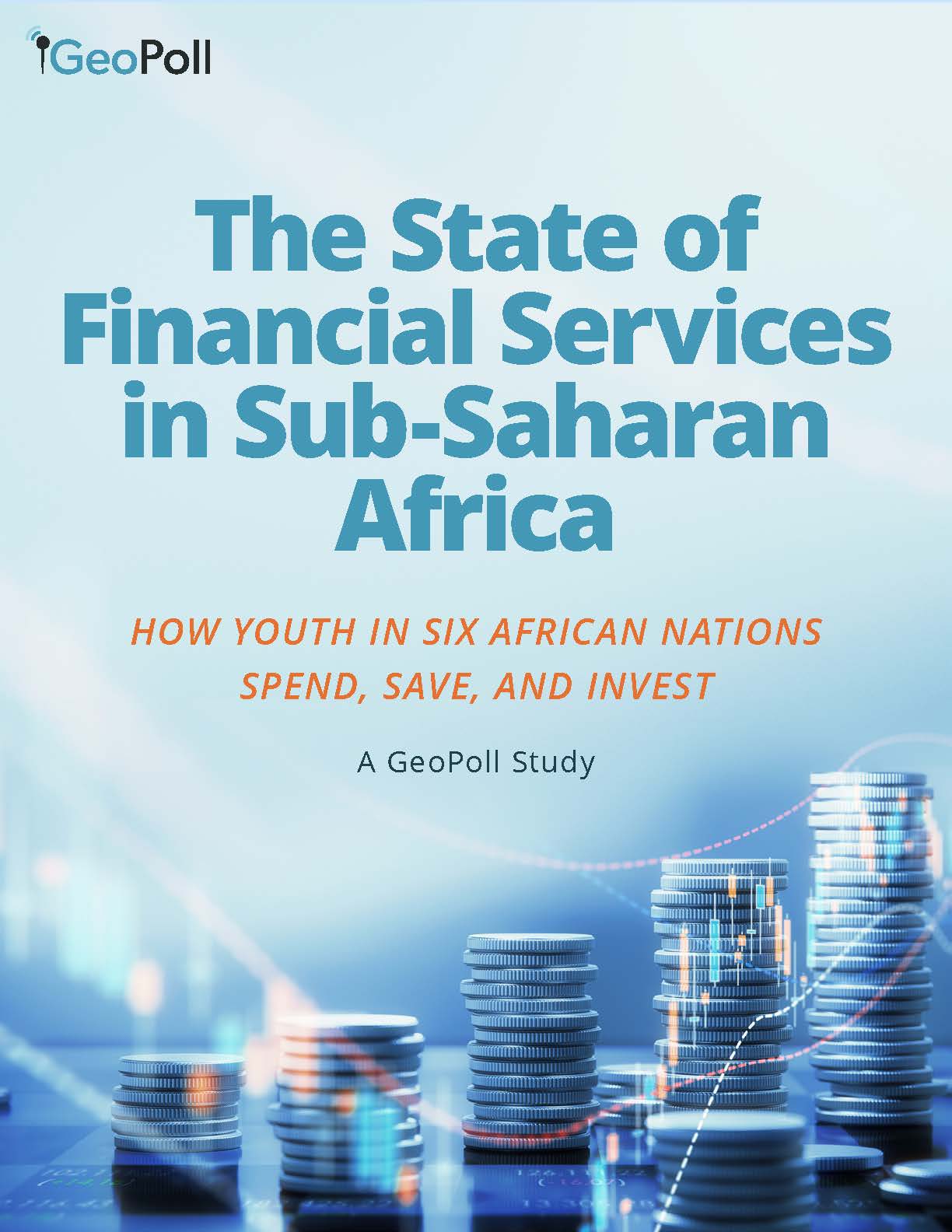GeoPoll is pleased to announce the release of a new report from our most recent study on financial services in sub-Saharan Africa. The 26-page report provides data on how youth in six African nations spend, save, and invest and is available to download for free, now.
In this post, we will provide details on the study itself, provide background information on why this study was conducted, and explain what information is included in the report.
Details on GeoPoll’s Study
In order to better understand the state of financial services in sub-Saharan Africa today, GeoPoll conducted a study on the use of, access to, and challenges surrounding financial services in the region.
Data for the report was collected from over 2,000 respondents in Kenya, Uganda, Tanzania, Ghana, Nigeria, and Cote d’Ivoire, and includes insights on:
- Income
- Purchase types and share of wallet
- Payment types
- Savings culture & practices
- Investment culture & practices
Why GeoPoll Conducted This Study: A Background on Financial Inclusion in Sub-Saharan Africa
Since the reformation of financial sectors throughout Africa in the 1990s, there has been a focus on economic development in sub-Saharan Africa through the expansion of financial services. More recently, the introduction of digital financial services has spurred further growth in the industry; traditional retail banks have adapted to provide more robust services, while innovations like mobile money have emerged. Additionally, global insurers, such as Allianz, have begun expanding in haste into markets in sub-Saharan Africa due to potential seen in the growing consumer class, the high percentage of youths, and the increase in infrastructure projects by both national and foreign parties.
Despite this, as the global financial sector looks to expand into an under-tapped market and Africans become increasingly savvy with their finances, the majority of sub-Saharan Africa’s population remains unbanked.
Traditionally, institutions in sub-Saharan Africa reserved formal banking for the upper-class, which made financial inclusion in the region challenging. Today, there are still issues that impede financial inclusion left over from the class-centered banking tradition, and mistrust of banks and the prevalence of informal trade also contribute to low financial inclusion.
However, there are signs that the use of formal financial services is increasing; McKinsey predicts that by 2022, over half of Africans will have access to banking services. This growth —spurred in part by the massive uptake of mobile money services like M-Pesa—is expected to continue and lead to more investment by the banking sector in the region, and ultimately close the gaps seen in financial inclusion between classes.
It is clear that financial services in sub-Saharan Africa are changing rapidly; however, as expected in such a diverse continent, the availability and use of financial services varies widely by country. In response to the shifts, continual growth, and variation across sub-Saharan Africa in the finance sector, GeoPoll embarked on a study to examine how Africa’s youth in six nations are engaging with financial services.
Report Details: How Youth in Six African Nations Spend, Save, and Invest
 In this report, GeoPoll presents the findings from an extensive research study to inform players in financial services on where populations currently stand. Each section provides data and analysis that serve as a barometer for the financial services space in each of the countries studied. In time, this report will also serve as a benchmark of growth as the financial sector looks back upon progress in the years to come.
In this report, GeoPoll presents the findings from an extensive research study to inform players in financial services on where populations currently stand. Each section provides data and analysis that serve as a barometer for the financial services space in each of the countries studied. In time, this report will also serve as a benchmark of growth as the financial sector looks back upon progress in the years to come.
GeoPoll presents the results from this study based on data collected from youth populations in Kenya, Tanzania, Uganda, Ghana, Nigeria, and Côte d’Ivoire. Topics studied include income streams, spending habits, payment types, investment decisions, savings patterns, and more. A mobile web survey was used to conduct the study. Thus, the data focuses on populations who have access to a mobile phone and basic internet services, which often represents the target population for retail banks and mobile money services.
Download your copy of the report for free, now!
To request pricing for a study of your own or a custom report on all of the data collected during this study, please contact us at [email protected].




